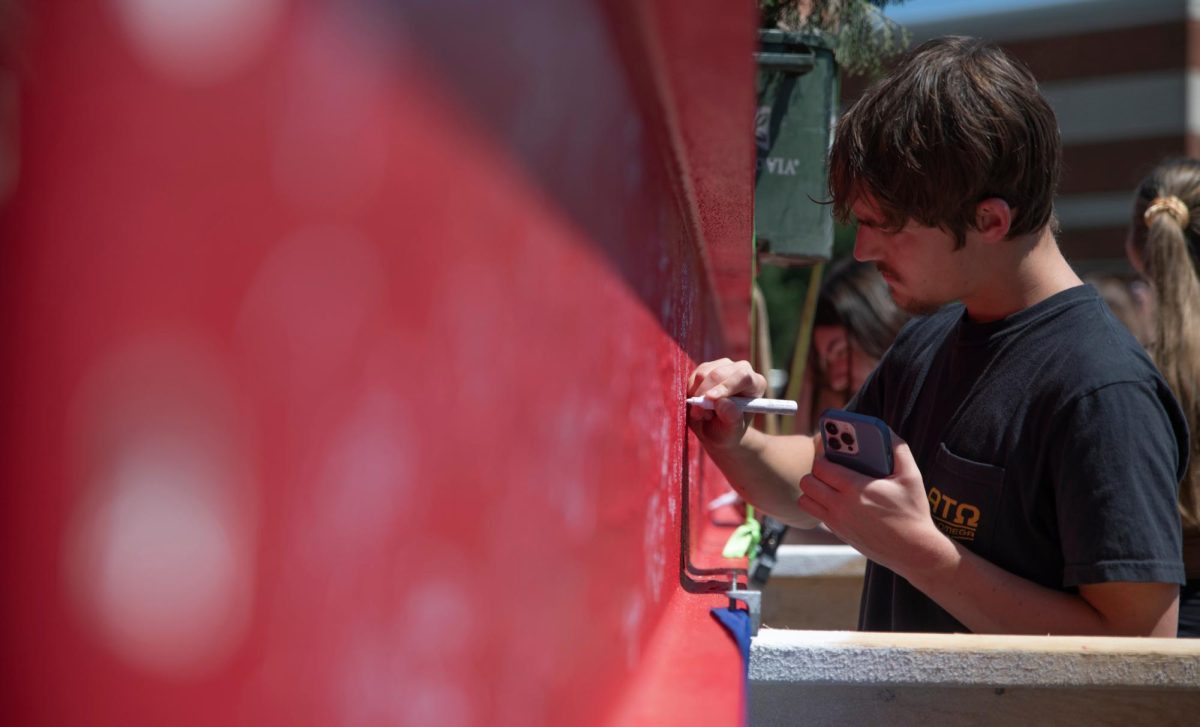Project could trigger city growth
April 3, 2003
The planning process for a project that could trigger the growth of Western and Bowling Green is coming to a close.
Yet, the result is miles away.
In July, the two-year planning process will end for a section of Interstate 66 from Cumberland Parkway to William Natcher Parkway and an outer beltline project, which would be an interstate connecting to William Natcher and circling the city.
There are seven proposed I-66 corridors through Warren County and four proposed outer beltline corridors around the city. There is also an option not to build anything for each project.
Keirsten Jaggers, a public information officer, said corridors are general 2,000-foot areas where interstate routes would be built. The actual road would only take up about 400 to 500 feet of this area.
I-66 started as a national project which would begin on the east coast of Virginia and extend to the west coast of California, said Jeff Moore, branch manager for planning with the Kentucky Transportation Cabinet.
Jaggers said the national project was part of a study done in 1991 by Wilbur Smith Associates, but it was decided that the project would not be economically feasible.
The current project calls for the interstate to travel through the states of Kentucky, Virginia, West Virginia and Missouri, Jaggers said.
The outer beltline around Bowling Green would allow traffic to move around the city, as opposed to moving through the city.
Although these ideas were already in existence, in July 2001, a two-year planning procedure was financed at $700,000.
Moore said in order to advance to the next step, which is design, state and federal money is needed. Until then, there will be no further progress.
“We’ve got to make recommendations that can sit on the shelf for a while until funding becomes available for them to move into the next phase,” Moore said.
If Bowling Green’s part of the interstate is not built, it is predicted that traffic on Interstate 65 would greatly increase, Jaggers said.
She added that there are about 45,000 vehicles a day on I-65 and half of them are trucks.
The current renovation of I-65 to six lanes from exits 24 to 43 should be complete in December, Jaggers said.
If funding is acquired for the interstate plans, Jaggers said, a section of Bowling Green’s part could begin in 10 to 15 years.
She said if this project continues, the method of funding will be up to the legislatures and congressmen. She said there will be a chance to receive money at the federal level this summer.
The cost of this project depends on its length and also the environmental needs, Jaggers said. She said there is no way to determine this now.
Jaggers said the proposed plans will be sent out to the public this summer.
Moore said public meetings will be held to discuss which corridors could move into the next phase and where the corridors would be located and address environmental concerns.
He added that environmental concerns have been looked at throughout the entirety of the project.
The natural environment, including air, water, land, animals and plants, and the human environment are the two types of environmental concerns they’ve considered, Moore said.
Warren County citizen John Blubaugh said he is concerned with the loss of prime farmland and a potential air quality problem if this building takes place.
Blubaugh said he has not seen any “numbers” to prove that any of the construction is needed. He added that it would also be a tax burden.
Jaggers said she could not give exact numbers but said more specific reasons for the need of the projects are in an existing traffic model.
“The traffic model is an engineering tool used to forecast what type of traffic you will have in 10, 20 years,” she said.
Blubaugh also said he was concerned with contaminants filtering into the ground.
Vickie Carson, a pubic information officer at Mammoth Cave, said Mammoth Cave officials have attended all the meetings during the planning.
“We’re interested in travel certainly,” she said. “I-66 could … bring people into this part of Kentucky.”
Carson said Mammoth Cave would also be interested in ensuring that if hazardous materials were spilled, it would not drain immediately underground.
Bowling Green City Commissioner Alan Palmer, professional-in-residence for the School of Journalism and Broadcasting, is optimistic there would be an increase in commerce and growth for the city and Western.
“More people will want to move here and base themselves here,” he said. “I think it will become a more attractive area to both students and university professors.”
Reach Shawntaye Hopkins at [email protected].



















![Students cheer for Senator at Large Jaden Marshall after being announced as the Intercultural Student Engagement Center Senator for the 24th Senate on Wednesday, April 17 in the Senate Chamber in DSU. Ive done everything in my power, Ive said it 100 times, to be for the students, Marshall said. So, not only to win, but to hear that reaction for me by the other students is just something that shows people actually care about me [and] really support me.](https://wkuherald.com/wp-content/uploads/2024/04/jadenmarshall-600x422.jpg)





